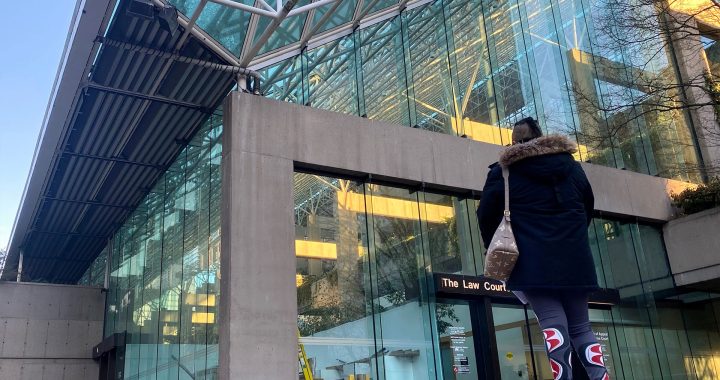To the public they are known by pseudonyms such as Madison, Dawn or Gabriella, but to family and friends, the 22 female youths profiled in a new report, from the Manitoba Advocate for Children and Youth, are casualties of failing systems in the province.
Daphne Penrose released her latest report titled Stop Giving Me a Number and Start Giving Me a Person, Thursday morning.
In it her office examines the barriers these youths faced prior to their deaths.
“These investigations are critical so we understand the gap, and so that we can amplify the voice and experience of children so the public knows about what those services are providing to their children,” Penrose said doing a virtual media conference.
Suicide is the leading cause of death for youth in the province, according to statistics released in the report.
Since 2008, 159 children and youth between the ages of 9 and 17 have died by suicide.
In the last five years, 79 youth have died by suicide in the province, an average of nearly 16 each year.
Of the youth profiled, 20 of them were First Nations or Métis, with more than half of them from northern Manitoba.
The stories of the youth shared in the report all weave a similar tale.
All were involved in the child welfare system at some point in their life and all were living with instances of early childhood trauma eventually leading to mental health and addictions issues.
There’s the story of Madison whose family’s involvement with child and family services began shortly after she was born as her parents struggled with addictions.
Madison was placed in care four times by the time she turned four.
She eventually became a permanent ward of the state when she was eight years old.
Reports of physical abuse in the home prompted one agency to remove the kids but Madison’s agency did not remove her.
Madison began expressing suicidal ideation and self-harm when she was 13.
A mobile crisis service assessed the teen where she told workers she was sexually abused in a previous foster home when she was five.
Charges were eventually laid against two individuals and Madison met with a mental health worker once but her file was closed when workers weren’t able to successfully engage her in a mental health plan.
This pattern of crisis-generated intervention continued for two years.
In the last six months of her life, Madison relied on substances to cope.
She continued to express suicide ideation and was admitted to hospital. After her last discharge there was confusion between mental health workers and the CFS agency over whether her placement would be located in a First Nations community or where she could access services.
She died one month later at the age of 15.
Then there’s the story of Dawn. She is described in the report as a musically gifted girl who could play many instruments.
Both of Dawn’s parents struggled with alcohol addictions and were unable to provide a safe and stable home to the young girl. By the age of three she had been apprehended three times and resided in give short-term placements.
Dawn was eventually placed in kinship care with a family member when she was three.
Four years later her father died by suicide. Dawn never received counselling or therapy after his death.
She began to self-harm at the age of 12. Dawn received support through her community’s mental health program. The two developed a treatment plan and met monthly.
Despite the support, she continued to self-harm. She was hospitalized five times in six months for self-harm and two suicide attempts.
Dawn spent approximately one month in an inpatient psychiatric unit located several hours from home.
In the months leading up to her death mental health workers completed two formal suicide risk assessments during which Dawn denied suicidal ideation.
At the age of 13, Dawn died by suicide in her home community. She had met with her mental health worker three days prior and created a personal safety plan.
Dawn was from a remote, isolated community and had to travel many hours for appointments with mental health workers, therapists, physicians and psychiatrists – or services she needed and had the right to receive.
The report tells the story of Gabriella, who died at 17. Her life was spent in and out of child welfare as her parents struggled with addictions. There was also physical abuse in the home.
The report says she was a good student who enjoyed extracurricular activities.
Gabriella became a permanent ward at 13. That’s when she began to hurt herself and was referred to a therapist. Later, she would disclose she’d been sexually abused.
As time went on, Gabriella attempted suicide multiple times and had short stays in hospital. She was always discharged with a plan, but the responsibility to follow was on her. Her final discharge plan included a list of crisis numbers and instructions to reach out.
Gabriella died by suicide the next day.
Two years ago the province committed to addressing easier access to services after a report came out with recommendations for improving access and coordination of mental health and addictions services in the province.
While the government has made investments to address some of the recommendations, Penrose said more needs to be done.
“We still have not seen a strategic plan for how child and mental health and addictions services are going to move forward,” she said.
“It’s still a gap that we deal with on a daily basis in our advocacy stream.”
Penrose makes seven recommendations in the report including access to services across all areas of the province, early childhood trauma education and training for service providers and the development of more youth hubs in remote and rural areas.
Penrose said there is a clear lack of services in these communities.
“While the help they received in hospital or in treatment was good the problem was they didn’t have a person to help them navigate…community services when they returned back to their community,” she said.
First Nations leadership is calling for more culturally appropriate services.
“The provincial and federal governments continue to ignore First Nations solutions resulting in this tragedy. This has gone on for far too long,” Assembly of Manitoba Chiefs Grand Chief Arlen Dumas said in a statement.
For Penrose, she hopes this report and the stories in it finally help enact change in the province.
“If this doesn’t I don’t know what will.”
In a statement to APTN News, Health, Seniors and Active Living Minister Cameron Friesen said, “We are committed to working together with organizations, communities and families to help improve the lives of our children and youths.”
“The recommendations made by MACY in the report will be considered by government, across all departments, to develop solutions.”
The Canada Suicide Prevention Service enables callers anywhere in Canada to access crisis support using the technology of their choice (phone, text or chat), in French or English: Phone: toll-free 1-833-456-4566 Text: 45645
With files from The Canadian Press










